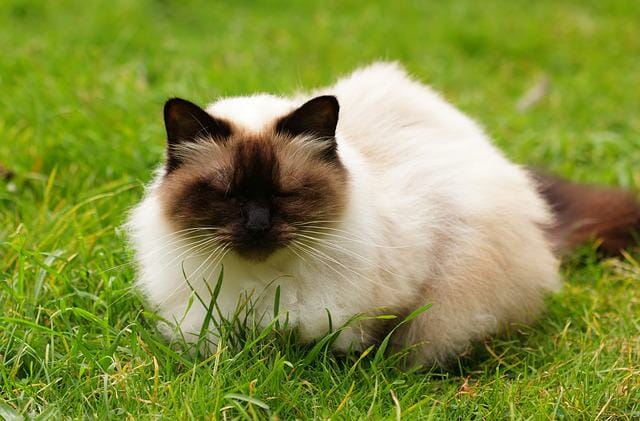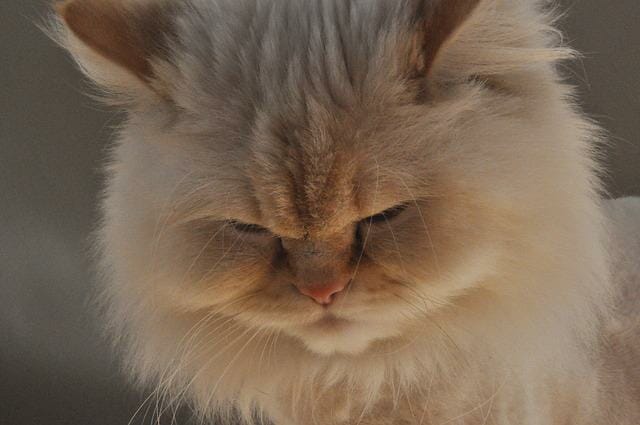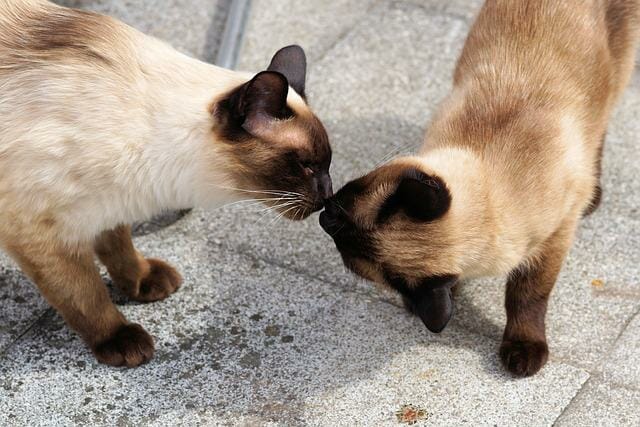Himalayan Cat vs. Siamese Cat: Similarities and Differences of Himalayan Cat and Siamese Cat
Himalayan cats have long, luxurious coat that is typically white or cream-colored, with darker points on the face, ears, feet, and tail. They have a stocky build, short legs, and a rounded head with a flat face. Siamese cats, on the other hand, have a sleek, short coats that can be a variety of colors, with darker points on the face, ears, feet, and tail. They have a slim, athletic build, long legs, and a triangular head with large ears.


Table of Contents
Similarities of Himalayan Cat and Siamese Cat
Diet
The dietary needs of Himalayan and Siamese cats are generally similar to those of other domestic cat breeds. Both breeds require a balanced diet high in protein and low in carbohydrates, with plenty of water to keep them hydrated.
It is important to choose a high-quality cat food specifically formulated for their age, activity level, and any health issues they may have. For example, some cat foods may also be formulated specifically for certain breeds or coat types, so it may be worth considering a food that is tailored to the needs of Himalayan or Siamese cats.
It is also important to monitor their weight and adjust their food intake accordingly to prevent obesity, which can lead to a range of health problems. Consult a veterinarian to determine the appropriate amount and type of food for your cat. Additionally, it is recommended to avoid feeding cats human food, as some foods can be toxic to cats.
Pointed Coats
Pointed coats are a distinct characteristic shared by both Himalayan and Siamese cats. This means that their coats are light in color, usually white or cream, with darker points on their ears, face, tail, and feet. This pattern is caused by a temperature-sensitive gene that produces darker pigments in the cooler parts of the body, such as the extremities.
The paint colors in both breeds can vary, but they are typically shades of brown, blue, lilac, and chocolate. The pointed coat pattern is often seen in other cat breeds, such as the Birman and Ragdoll.
Vocalization
Himalayan and Siamese cats are known for vocalizing and can be quite chatty with their owners. Siamese cats, in particular, are famous for their loud and distinctive meows, often described as sounding like a human baby crying. They are very communicative and often use their vocalizations to express their needs and desires to their owners.
Himalayan cats are also known to be vocal, but their meows are generally quieter and softer compared to Siamese cats. However, they are still quite communicative and will use their meows to interact with their owners and express their needs. If you are considering adopting a Himalayan or Siamese cat, be prepared for its vocal nature and enjoy the conversations!
Intelligence


Himalayan and Siamese cats are intelligent breeds. Siamese cats, particularly, are known for their high intelligence and problem-solving abilities. They are curious, love exploring their surroundings, and can learn new tricks and commands. They are quick learners and can be easily trained using positive reinforcement techniques.
Himalayan cats are also intelligent but tend to be more laid-back and less active than Siamese cats. They enjoy playing with toys and interacting with their owners but are generally less demanding and more content with lounging around the house.
Affectionate
Himalayan and Siamese cats are known for their affectionate personalities. Siamese cats are often described as very social and loving towards their owners, often seeking attention and affection. They are known to be very loyal and attached to their owners and enjoy snuggling and cuddling with them.
Himalayan cats are also known for their affectionate nature but are more laid-back and relaxed than Siamese cats. And enjoy spending time with their owners but are also content to lounge around and nap independently.
Differences between Himalayan Cats and Siamese Cat
Origin
The Siamese cat originated in Thailand (formerly known as Siam) and has been documented for centuries in Thai literature and art. The breed was introduced to the Western world in the late 1800s and quickly gained popularity.
The Himalayan cat, on the other hand, is a crossbreed between the Siamese and Persian cats. According to Hills Pet Nutrition, the breed was first developed in the United States in the 1930s to combine the Siamese’s color points with the Persian’s long, fluffy coat.
Appearance
Himalayan cats and Siamese cats have distinct differences in their appearance. Himalayan cats have round faces, stocky build, short, snub noses, and long, fluffy coats. while Siamese cats have a slender and muscular build, triangular head shapes, and long, pointed ears
long and sleek coat.
While both breeds have a pointed coat pattern, Himalayan cats have a longer, fluffier coat and a rounder, more stocky build, while Siamese cats have a sleeker, more athletic build and a more triangular head shape.
Temperament


Siamese cats, on the other hand, have short, sleek coats that require minimal grooming. They typically do not require regular brushing, but occasional brushing can help to remove loose hair and reduce shedding. Bathing is usually only necessary if the cat gets particularly dirty or greasy; however, keeping their nails trimmed and their ears clean is important to prevent infections.
Himalayan and Siamese cats have different temperaments, although both breeds are known for being quite social and interactive with their owners.
Himalayan cats are affectionate and loyal, calm and gentle, enjoy being held and cuddled, are not particularly active or energetic, can be shy around strangers, and can tend to health issues due to short snouts, including respiratory and dental problems.
Siamese cats are active and energetic, intelligent and curious, vocal and talkative, enjoy being around people and other pets, demanding attention, and have a strong-willed and independent streak.
Grooming
Himalayan cats have long, fluffy coats that require regular brushing to prevent matting and tangling. They also tend to shed a lot, so frequent grooming can help reduce shedding and keep their coats healthy and shiny. Bathing is also recommended occasionally to keep their coats clean and prevent matting.
